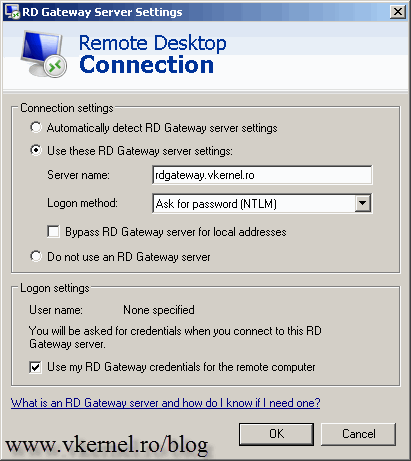
Once you have your configuration properly defined, you can confirm UDP transport is operating properly from the RD Gateway Manager Monitoring Tab and viewing the Transport column. The HTTP connection is used to maintain client communication with the target server, and the two UDP connections are used to support a rich multimedia experience.
2012 R2 REMOTE DESKTOP SERVICES RD GATEWAY WINDOWS
In Windows Server 2012, the RD Gateway server creates three internal connections for each user session: one HTTP connection and two UDP connections.UDP connections are established only after a main HTTP connection has been created between the remote desktop client and the remote desktop server. You cannot disable the HTTP transport because UDP connections can’t be created as stand-alone.There are a couple of configuration items you should be aware of if you plan to open up UDP traffic. The HTTP and UDP transports are more efficient than RPC over HTTPS, which means they provide the end user with a better experience over low bandwidth or a poor performing Internet connection. Allowing the UDP transport has the benefit of supporting real time traffic over high latency networks.

A hotfix is available to resolve this issue. Many deployments I’ve seen have UDP enabled on the server, but do not have their Internet firewall configured to allow the traffic. This article describes an issue that occurs if you try to access the Remote Desktop Services (RDS) server through Remote Desktop Gateway (RD Gateway) service in Windows Server 2012 R2. You can view your RD Gateway Transport settings by opening the properties of the RD Gateway Server from the Remote Desktop Gateway Manager, then clicking on the Transport Settings tab.īy default, UDP transport is enabled over port 3391.

Once connected to the deployment, the internal certificate with the ‘. Beginning with Windows 2012, three types of transports are supported through the RD Gateway. The RD Gateway and Remote Desktop Client version 8.0 (and above) provides the external users with a secure connection to the deployment. If you’re not familiar with the RD Gateway role, it is used for secure connectivity to Remote Desktop Services via the Internet.


 0 kommentar(er)
0 kommentar(er)
